Scientists Develop Self-Healing Materials for Electronics and Wearable Devices: Imagine a smartwatch that repairs itself after a scratch or a fitness tracker that keeps working even after being accidentally torn. Thanks to a revolutionary breakthrough in materials science, scientists have developed self-healing materials for electronics and wearable devices, opening the door to longer-lasting, more reliable, and even smarter technology.
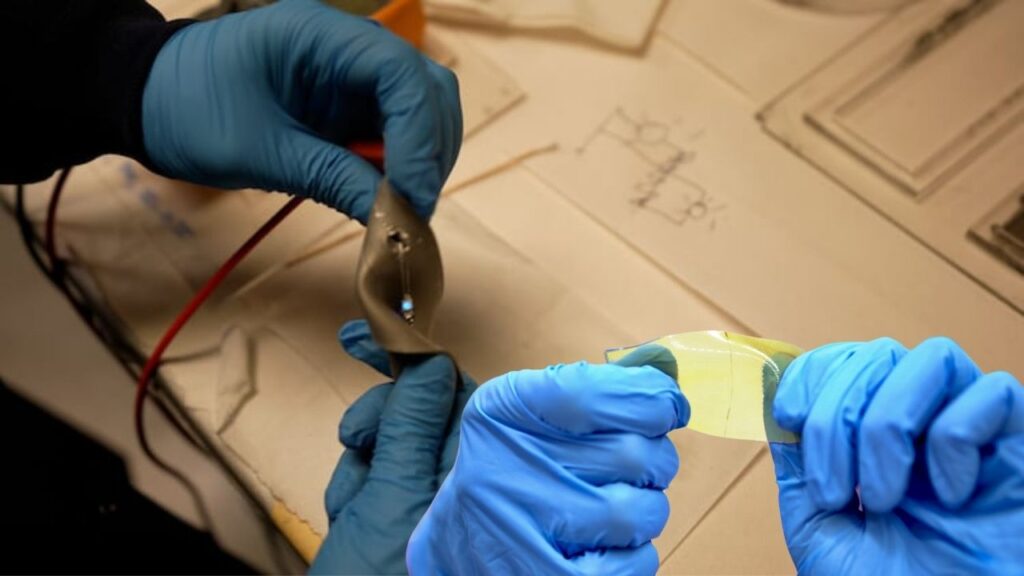
These new self-repairing materials, especially in the form of electronic skin (E-Skin), are set to transform wearable health monitors, soft robotics, and flexible electronics. With their ability to quickly heal from physical damage—often in just a few seconds—they bring both science fiction and sustainability a little closer to reality.
Table of Contents
Scientists Develop Self-Healing Materials
| Feature | Details |
|---|---|
| Innovation | Self-healing E-Skin with AI integration |
| Healing Speed | Over 80% functionality restored in 10 seconds |
| Durability | Survives 50+ cut-heal cycles and 50,000+ bends |
| Temperature Resistance | Stable across wide temperature and humidity ranges |
| Applications | Wearables, robotics, physical therapy, personalized health |
| Lead Institution | Terasaki Institute for Biomedical Innovation |
| Published In | Science Advances |
The development of self-healing materials for electronics and wearable devices marks a giant leap toward smarter, more resilient technology. From AI-powered health monitoring to scratch-resistant devices, the benefits span industries and age groups.
While commercial rollout may take a few more years, this innovation signals a future where your devices take care of themselves—and maybe even take care of you.
What Are Self-Healing Materials?
Self-healing materials are substances that can repair damage automatically, similar to how human skin heals after a cut. In electronics, this means materials that restore their electrical conductivity and physical integrity without human intervention.
The concept is not brand new. Early versions of self-healing polymers appeared in the late 20th century, but they were limited by slow healing times, low durability, or complex triggering methods such as heat or light. This new generation of materials, however, achieves rapid healing under normal conditions without external stimuli, making it practical for everyday electronics.
The Breakthrough: E-Skin That Heals in Seconds
At the heart of this innovation is a flexible and stretchable polymer embedded with silver nanowires and dynamic disulfide bonds. These bonds act like a zipper that pulls itself back together after being broken.
According to the Terasaki Institute for Biomedical Innovation, this E-Skin:
- Restores over 80% of its electrical performance within 10 seconds of damage.
- Requires no external heat, light, or chemicals to heal.
- Maintains performance after more than 50 cut-heal cycles.
- Operates effectively under running water, varying temperatures, and high humidity.
This means a wearable device can be bent, scratched, or even torn, and still function normally in just a few seconds.
How Does It Work?
Let’s break down the science behind this self-healing marvel in simple terms:
Key Ingredients:
- Silver Nanowires: These create a conductive network, allowing the E-Skin to sense touch, pressure, and temperature.
- Disulfide Bonds: These are chemical linkages that break and reform quickly, allowing the material to ‘zip’ back together after being damaged.
- Stretchable Polymer Base: Think of it like rubber—it bends, stretches, and flexes without breaking.
The Healing Process:
- Damage occurs (cut or scratch).
- The disulfide bonds break.
- Within seconds, the bonds reform automatically, pulling the material back together.
- The silver nanowires reconnect, restoring electrical functionality.
No tools, no downtime—just seamless recovery.
Technical Challenges and How Researchers Overcame Them
Creating a material that heals quickly without external help required solving key problems:
- Speed vs. Strength: Faster healing usually meant weaker bonds. Researchers balanced this by optimizing the density of disulfide bonds and silver nanowires.
- Environmental Stability: Early materials failed under humidity or mechanical stress. The new polymer matrix is engineered to maintain performance in these real-world conditions.
- Scalability: Manufacturing complex nanowire networks is challenging. The team developed methods compatible with large-scale production using roll-to-roll printing.
How Does It Compare to Other Self-Healing Technologies?
Earlier self-healing electronics relied on:
- Heat activation: needing an external heat source to trigger healing.
- Microcapsules: embedding capsules that burst to release healing agents, but these only work once.
- Hydrogel-based materials: which are slow to heal and less durable.
The new E-Skin’s instant healing without external stimuli and ability to repeat cycles many times sets it apart as a game-changer.
Market Potential and Industry Impact
The global wearable technology market is expected to reach $116 billion by 2025, growing at over 15% annually.
Introducing self-healing materials could:
- Extend device lifespan, reducing replacement costs.
- Boost consumer confidence in durable wearable tech.
- Open new avenues in healthcare monitoring, soft robotics, and smart textiles.
Industries from healthcare to defense stand to benefit, with potential applications in prosthetics, patient monitoring, and adaptive robotics.
Safety and Ethical Considerations
With AI integration comes responsibility. The E-Skin’s AI systems process sensitive biometric data, so:
- Data privacy must be ensured through secure encryption.
- Transparency about data use is crucial for user trust.
- Material safety has been tested to be non-toxic and biocompatible.
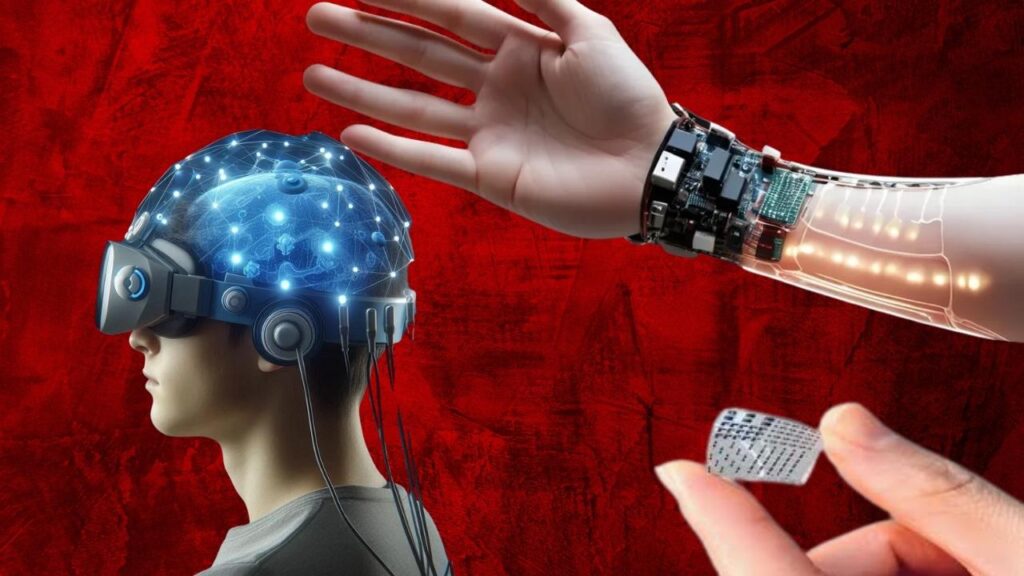
Ongoing research focuses on these ethical challenges alongside technical development.
Future Outlook: What’s Next?
Scientists are exploring:
- Combining self-healing with energy harvesting so devices power themselves.
- Making the material biodegradable to further sustainability goals.
- Integrating with augmented reality (AR) wearables for seamless user experience.
- Expanding applications into smart clothing and medical implants.
Real-World Applications
1. Wearable Health Monitors
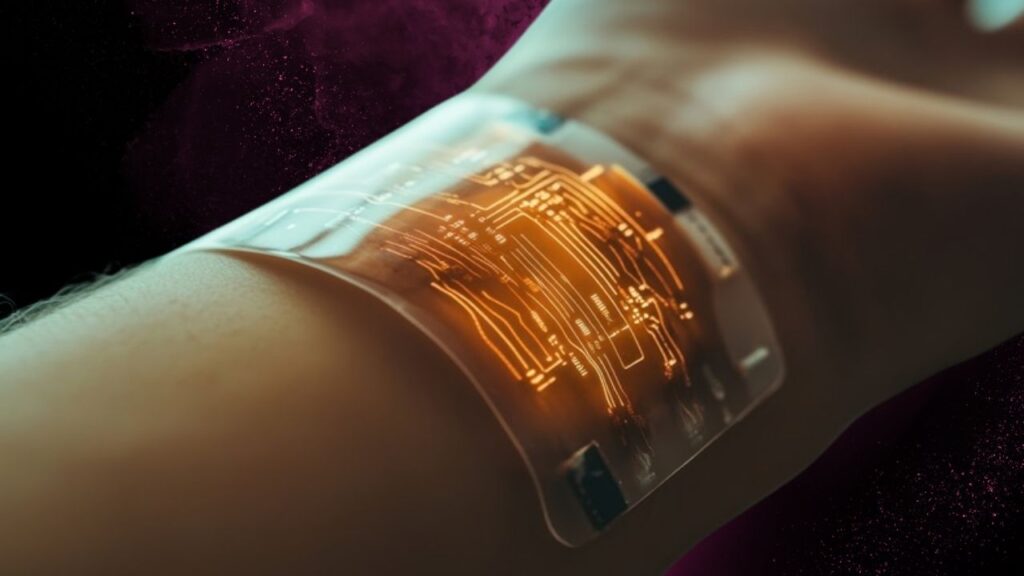
- E-Skin can measure muscle fatigue, heart rate, and even hydration levels.
- Ideal for athletes, elderly patients, or post-surgical monitoring.
2. Smart Prosthetics
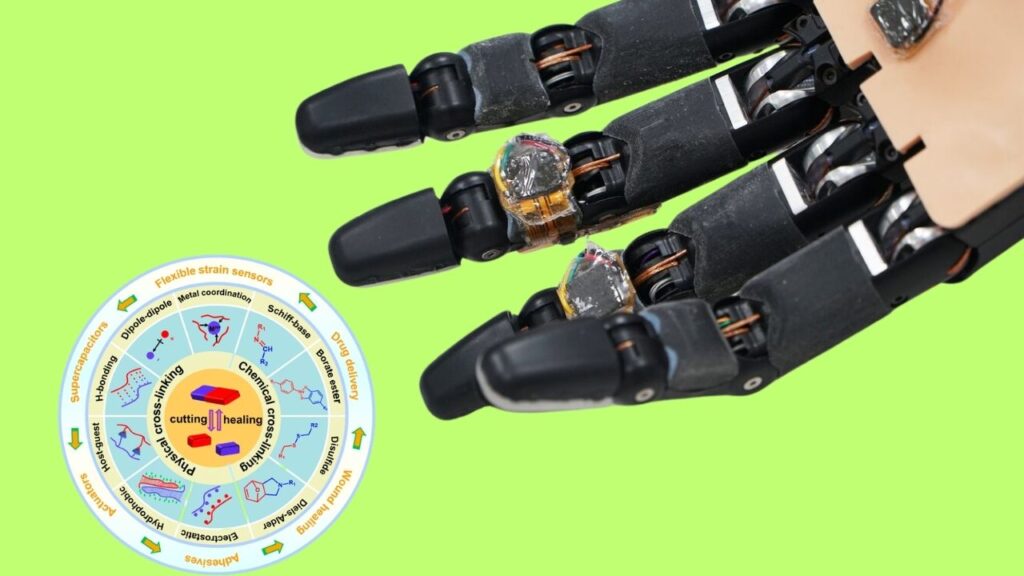
- Artificial limbs gain human-like touch sensitivity.
- Damage from daily use won’t impair functionality thanks to self-repairing circuits.
3. Flexible Electronics

- Smartphones, tablets, and keyboards that bend and flex.
- Screens that repair scratches automatically—no screen protectors needed.
4. Soft Robotics
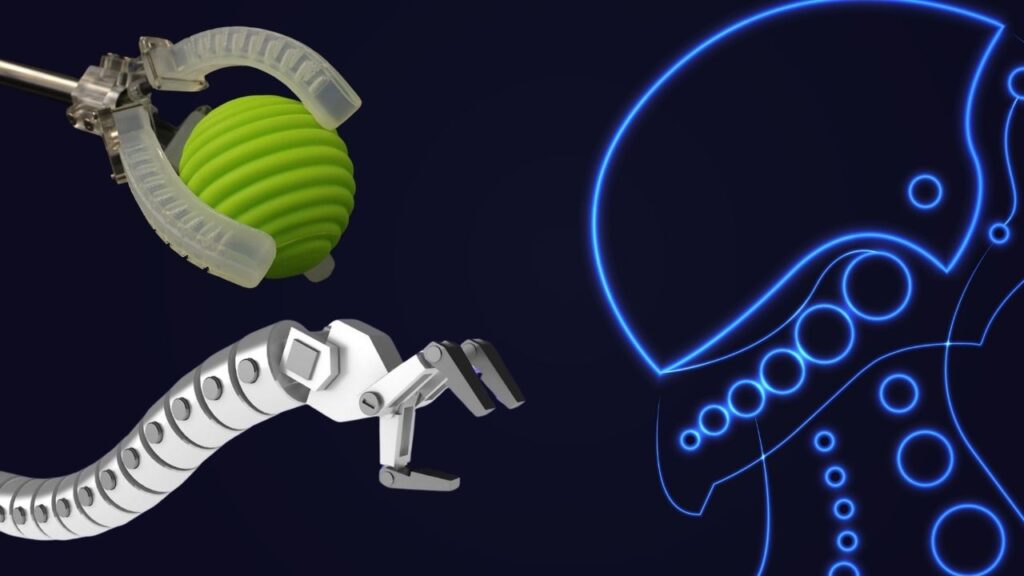
- Robots with skin that heals—making them safe and adaptable for healthcare, manufacturing, and disaster response.
The Role of Artificial Intelligence
The new E-Skin doesn’t just heal—it thinks.
The integrated system uses AI algorithms to interpret data from sensors. For example:
- It can detect muscle strain patterns to predict injury.
- Track fatigue levels in real time.
- Send alerts to your smartphone or a healthcare provider.
This makes the material an ideal tool for remote patient care, sports performance optimization, and rehabilitation.
Sustainability and Cost Benefits
Self-healing electronics help reduce electronic waste, which is a growing global concern. According to the Global E-Waste Monitor, the world generated over 59 million tonnes of e-waste in 2021—only 17% of which was properly recycled.
By making devices that last longer and repair themselves:
- Consumers save money.
- Manufacturers reduce returns and repairs.
- Landfills see less toxic waste.
AI Meets Materials Science: How Machine Learning Is Accelerating Scientific Discovery
The Rise of Electrochromic Glass: Smart Windows That Save Energy and Adapt to Light
FAQs About Scientists Develop Self-Healing Materials
Q1: How fast can the material heal?
A: It restores over 80% of its function in just 10 seconds, with full recovery shortly afterward—no external triggers needed.
Q2: Is this technology available commercially?
A: Not yet. It’s still in the research and testing phase, but early prototypes are highly promising.
Q3: Can this be used in mobile phones or tablets?
A: In the future, yes. Flexible and self-healing screens are a potential application, especially for foldable smartphones.
Q4: Is the material waterproof?
A: Yes. It remains functional under running water and in high-humidity conditions.
Q5: Where was this research published?
A: In the peer-reviewed journal Science Advances and highlighted by ScienceDaily.



















